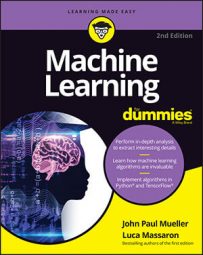- Symbolists: The origin of this tribe is in logic and philosophy. This group relies on inverse deduction to solve problems.
- Connectionists: The origin of this tribe is in neuroscience. This group relies on backpropagation to solve problems.
- Evolutionaries: The origin of this tribe is in evolutionary biology. This group relies on genetic programming to solve problems.
- Bayesians: This origin of this tribe is in statistics. This group relies on probabilistic inference to solve problems.
- Analogizers: The origin of this tribe is in psychology. This group relies on kernel machines to solve problems.
Using the Bayesian tribe strategy, you solve most problems using some form of statistical analysis. You do see strategies embraced by other tribes described, but the main reason you begin with statistics is that the technology is already well established and understood. In fact, many elements of statistics qualify more as engineering (in which theories are implemented) than science (in which theories are created). Understanding the role of algorithms in machine learning is essential to defining how machine learning works.

